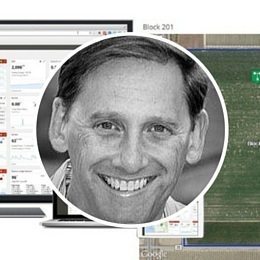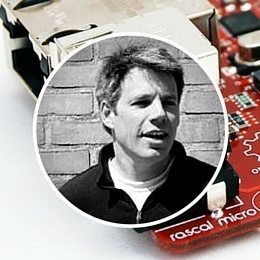While from the outside, many connected devices may look superficially the same as traditional versions, from an engineering perspective, they are several times more complex.
The overall goal of a smart device is that it is able to adapt to the environment and behavior of the user in a way that it can increase service value. This shift towards data-centric manufacturing is set to change the way that appliance engineers will work in the coming decades.
Engineers are being forced to adapt to this paradigm shift in order to utilize this technology to build something that actually adds value to consumers lives. Below are some of the key elements that need to be taken into consideration for connected products to make it in the marketplace and be successful.
1) Interoperability
At the engineering stage, decisions need to be made regarding the direction of the project, the goals and what standards it is to adhere to. These decisions can dictate the whole direction of the project.
Most IoT devices are installed on a platform and inside an ecosystem and the major concern is how devices will communicate with each other,
In smart home device design, one common decision that engineers are often found discussing on message boards, is the decision to use either the Z-Wave or Zigbee protocols. There are differences between the two in terms their higher rates of transmission which can dictate the suitability of its application. A wider concern that is being faced is choosing the protocol that has already been established as a standard for location or an industry. For example Z-Wave is much more common in the US and is the choice for 9 out of 10 US based insurance companies. On the other hand, Zigbee is more common in Europe and is the standard protocol used from important brands like Philips, Lutron and Samsung. Meaning engineers are forced to think less about the technical perspective and instead take a long bet on the future of that market.
2) Security
Connected devices are vulnerable and consumers are worried about threats to their IP and personal information. Thus, security fears threaten any the mass adoption of IoT technology. Security has to be a main consideration in the design phase and built in from the very beginning.
Security nodes and elements are usually not built into IoT platforms and are often difficult to implement from both a hardware and software perspective. Focusing on security from a software perspective is not enough as any breach can threaten the whole system.
3) User Experience
In IoT, the device is the user experience. If a device does not have the correct sensors or communicate properly with other aspects of the network, then this will result in a negative experience for the user with the device. Thinking in this way represents a paradigm shift from previous modes of thinking regarding user experience in hardware design.
With a product like a mobile phone or laptop, the user-experience has be mainly considered in terms of software. With connected products, screens are in many way less important than the physical device. Take for example Tado thermostat, or Rachio smart irrigation controller that use only mobile phone and tablet apps along with desktop access for the management and setup of their devices.
Another major user experience concern is the mental jump for them to think about a device in the context of how it communicates with other devices in a wider ecosystem in the user’s home. What has occurred up until this point, is that because connected products have so many ways of communicating with the devices (anything from LED’s to voice control) often make smart home set-ups feel logically incoherent and confusing.
There is little long term value for a end user using a collection of disjointed devices and user interfaces.
4) Supply Chain Complexity
With the development of connected devices, finding the supply chain partners that are required to bring a product to market is more than simple matchmaking.
The complexity of the IoT supply chain means that you are usually not dealing with one factory, but many. For example, if one was to develop a smart toaster, chances are they would probably arrange a collaboration between and OEM company that builds toasters, with sensor manufacturers and other suppliers directly related to the IoT.
Moreover, all of the supply chain partners want to make sure that the work they put in is worth the effort on their part and what as large a role in the project as possible. For an engineer, new skills need to be developed for managing your supply chain better and distributing benefits between different supply chain partners. With such complicated products, there is a greater need for more intelligent supply chain management.
For businesses who are gearing up for success in the IoT space, the above means that they might have to reconsider their own corporate structure. Manufacturing teams of the future will not resemble those of today and workforces will need new skills and job roles.
Modern product development is thought of in terms of mechanical engineering, but this will be replaced by interdisciplinary staff structures that consider the product from a wider perspective than just a physical object.
If you would like to contact Matthew or learn more about HWTrek’s network visit HWTrek.com or follow their latest at @HWTrek.





